Phases of Work - Introduction
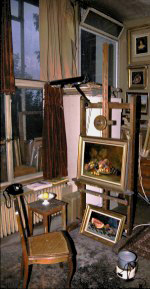 Let's introduce a division in Vietinghoff's work, subject to further development from the study of art-history. This division is primarily from the stylistic criteria originating from direct picture examination and is only secondarily connected with biographic facts. For this kind of painting it is not possible to set sharp boundaries for single phases. Nevertheless, it is helpful to structure such a immense body of work by defined dates for statistical purposes as well. Of course there are works from transition years: new elements can be observed toward the end of a phase and occasionally at the beginning of a new phase appear elements of the previous phase. This is a common phenomenon in artistically fluent development.
Let's introduce a division in Vietinghoff's work, subject to further development from the study of art-history. This division is primarily from the stylistic criteria originating from direct picture examination and is only secondarily connected with biographic facts. For this kind of painting it is not possible to set sharp boundaries for single phases. Nevertheless, it is helpful to structure such a immense body of work by defined dates for statistical purposes as well. Of course there are works from transition years: new elements can be observed toward the end of a phase and occasionally at the beginning of a new phase appear elements of the previous phase. This is a common phenomenon in artistically fluent development.This introduced division is distinct in the way of Vietinghoff's visual perception, his artistic transformation, his technical skills, and the level of painting quality which often is difficult to describe. Technical aspects (e.g. the brushwork) and the artist’s individual view and presentation make the so-called painter’s handwriting the genesis of a painting. It evolves continuously and naturally without intellectual intentions and abrupt style changes. It happens similar to the handwriting of an active person whose expression subtly changes according to his emotional and intellectual state.
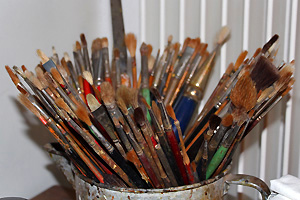 Overview
OverviewBeginnings I (1917-1931)
Beginnings II (1932-1944)
Maturity I (1945-1951)
Maturity II (1952-1969)
Mastery I (1970-1982)
Mastery II (1983-1989)
The chosen names for the phases should not conflict with more scientific research which may lead to other divisions with different names.
Beginnings I (1917-1931)
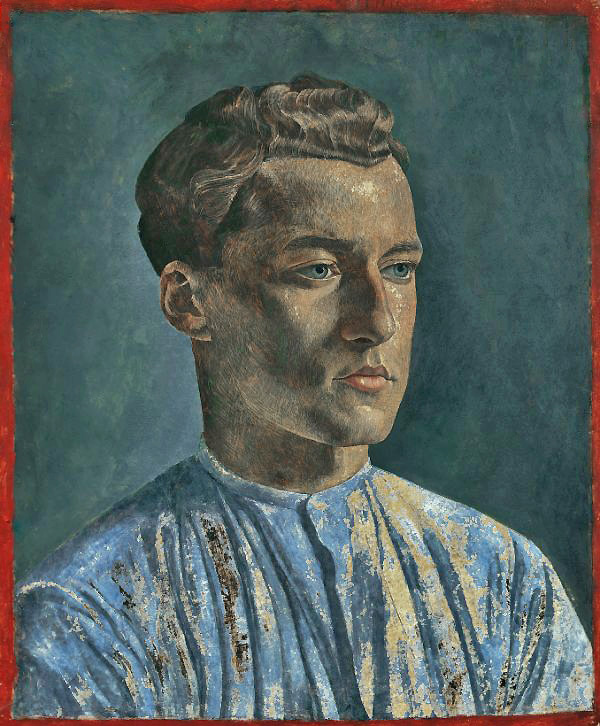 What happened during the Beginnings I Phase?
What happened during the Beginnings I Phase?As a teenager Egon von Vietinghoff made his first painting attempts. We do not know what his work looked like. A teacher bought two of his paintings what may have encouraged him. Anyhow, the increasing desire to do artistic work lead him to quit the high school before graduation..
At first he apprenticed for a short time in a sculptor’s studio but recognized that painting seemed more appropriate for him. Besides the usual exercises with bottles, jugs and apples, he got portrait orders quite soon and could exhibit some of his early works. How he managed this despite being an untrained youth who was still without real technique is unknown. Perhaps we can attribute his success his own initiative or that of his parents or to his youthful enthusiasm and charm. Then again, perhaps these first paintings were quite good.
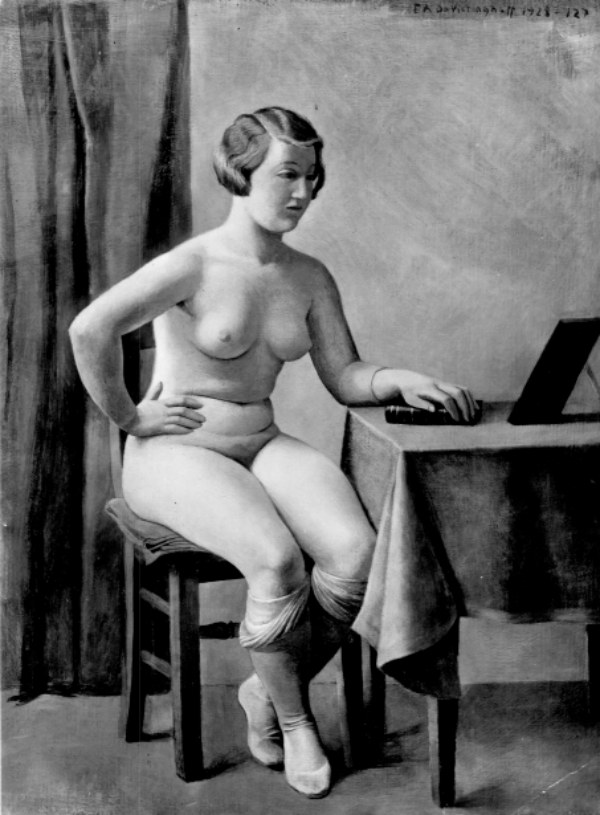
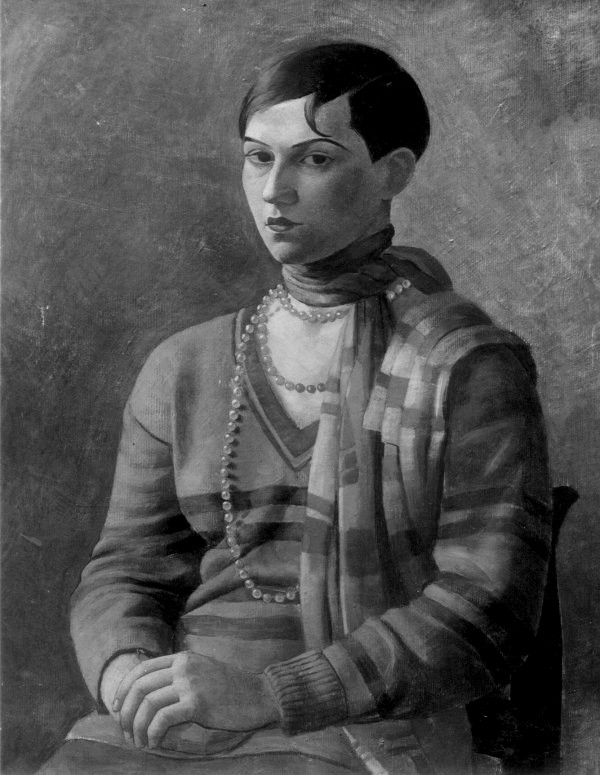 Decades later, when he was painting with extensive skills, the doors of the galleries were more closed to him.
Decades later, when he was painting with extensive skills, the doors of the galleries were more closed to him. A wellknown gallery owner in Zurich confessed him once frankly:
Your pictures are excellent but I simply cannot risk to exhibit figure paintings and therefore lose my international reputation as an up-to-date gallery owner. Afterwards he added a crude sentence about the power of the press.
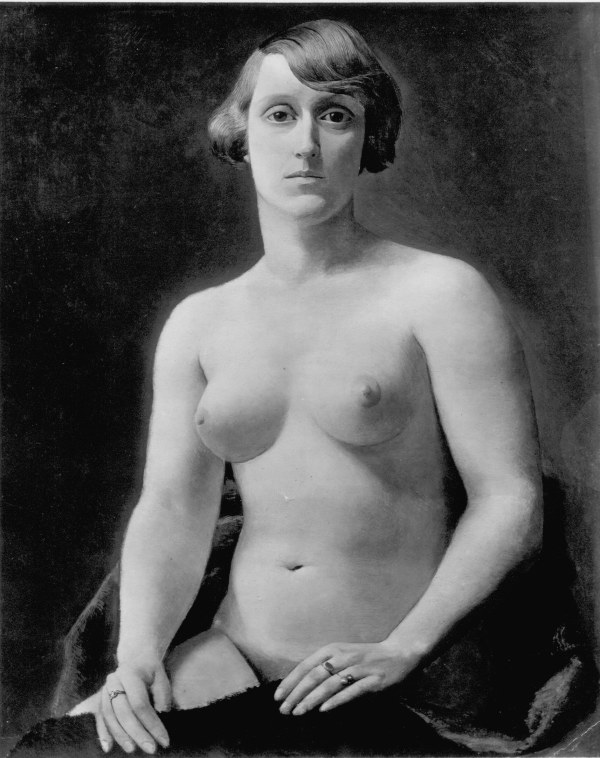
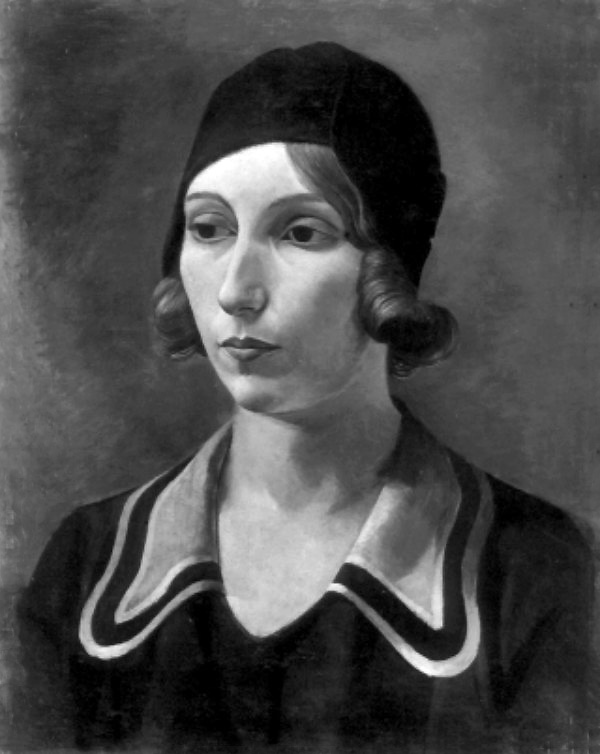 In the Beginning I phase we observe the end of World War I, his adventurous journey by foot through Spain and Morocco, his naturalization as a Swiss citizen, his stays in Munich and on Capri Island and finally his settling in Paris. There, he intensively continued drawing nudes.
In the Beginning I phase we observe the end of World War I, his adventurous journey by foot through Spain and Morocco, his naturalization as a Swiss citizen, his stays in Munich and on Capri Island and finally his settling in Paris. There, he intensively continued drawing nudes.It was the time of innumerable visits to the Louvre museum and the beginning of his experimental reconstruction of the lost oil-resin painting technique. During this time, for financial reasons, he would do casual works for companies such as mural painting and photomontages for advertisements. He also imbibed at numerous studio parties.
On one of his journeys to Italy he met his first wife whom he later married in Rome. The death of his mother and the birth of his daughter were other important milestones in this period.
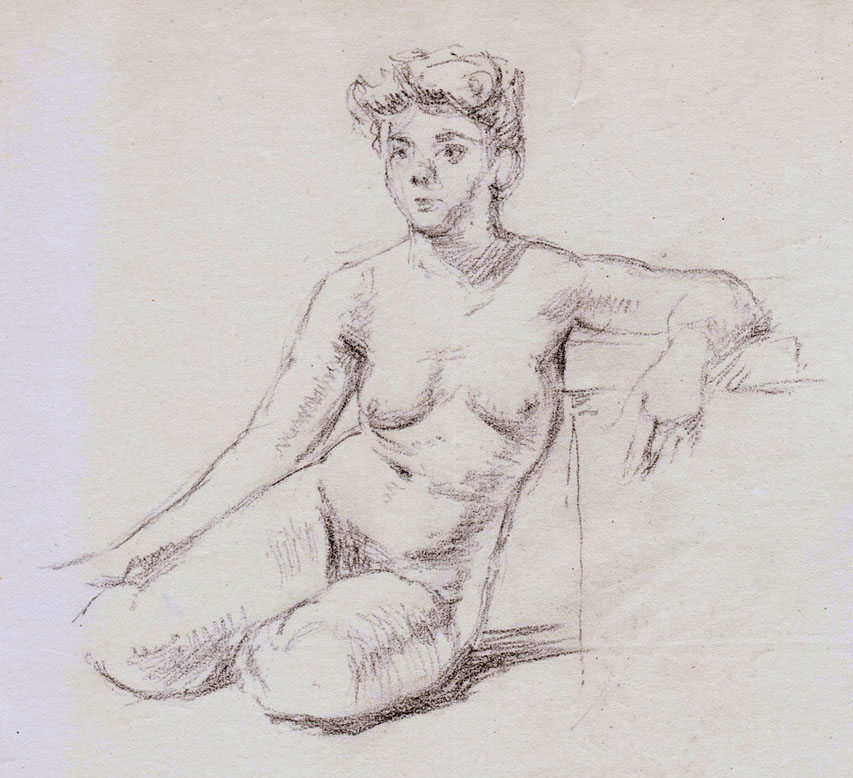
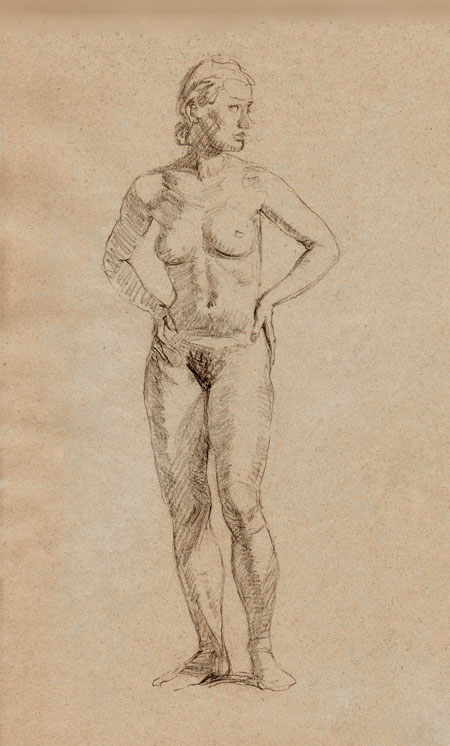 Vietinghoff wrote about his beginnings: The positions of the nude models shifted over a short time so I was forced to grasp their forms and proportions at one glance. This training later helped me to immediately catch the fundamentals of a movement and to render with only a few lines instead of smudging the paper with repeated corrections.
Vietinghoff wrote about his beginnings: The positions of the nude models shifted over a short time so I was forced to grasp their forms and proportions at one glance. This training later helped me to immediately catch the fundamentals of a movement and to render with only a few lines instead of smudging the paper with repeated corrections.Similarly, when portraying I intended to draw a line only when I was convinced it was the right one. This continual control excluded indecisive trials – thus I was accustomed to a discipline which I also applied when coloring.
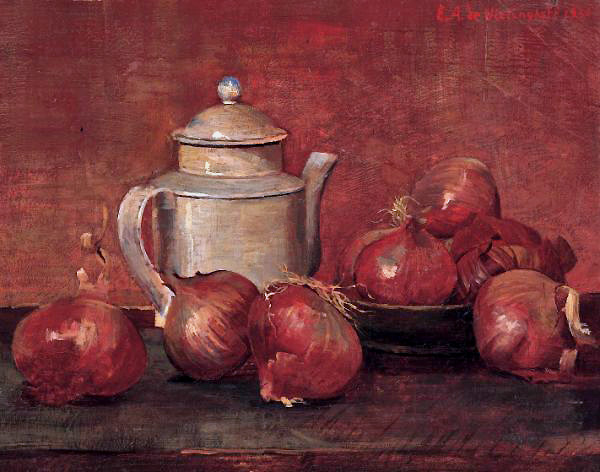 What was he painting in Beginnings I Phase?
What was he painting in Beginnings I Phase?He numbers and registers his pictures from the beginning with the exceptions of those he destroyed because he was not satisfied with the artistic result. Therefore his work is astonishingly well documented. This is not a matter of course for such an immense output of paintings from an obsessed painter as Vietinghoff was.
However, his handwritten records are a substantial help for the Foundation and further art historians. If we have a look at the first entries in his booklets, we discover his personal favored subjects which he noted in retrospect: girl’s portraits from his imagination and figure scenes. We also learn the difficulties with which he had to struggle.
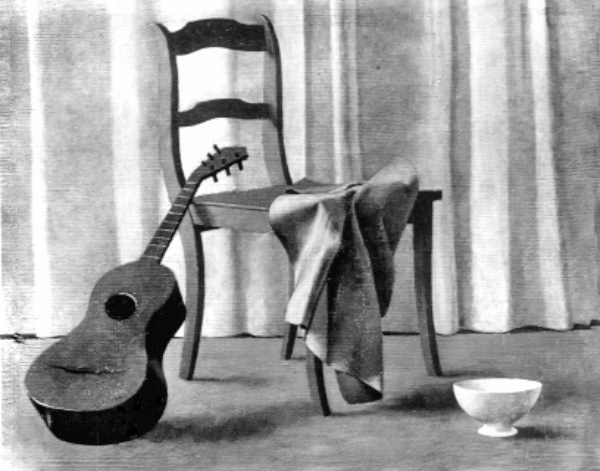
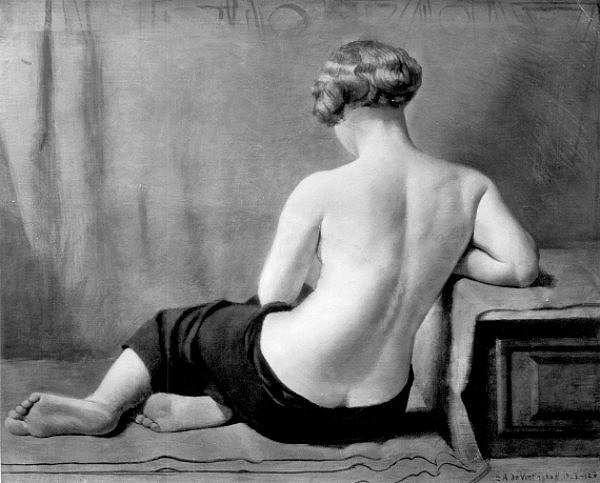 1) Girl portrait (tempera on cardboard), painted 1917. Sold to Dr. F., teacher and later director of the high school “Freies Gymnasium Zurich”.
1) Girl portrait (tempera on cardboard), painted 1917. Sold to Dr. F., teacher and later director of the high school “Freies Gymnasium Zurich”.2) Girl dancing and spectators in the jungle (oil on gelatin paper), painted 1917, exhibited in Lugano, not returned.
3) Forgotten subject. Sold to Dr. F. (like 1) in 1917.
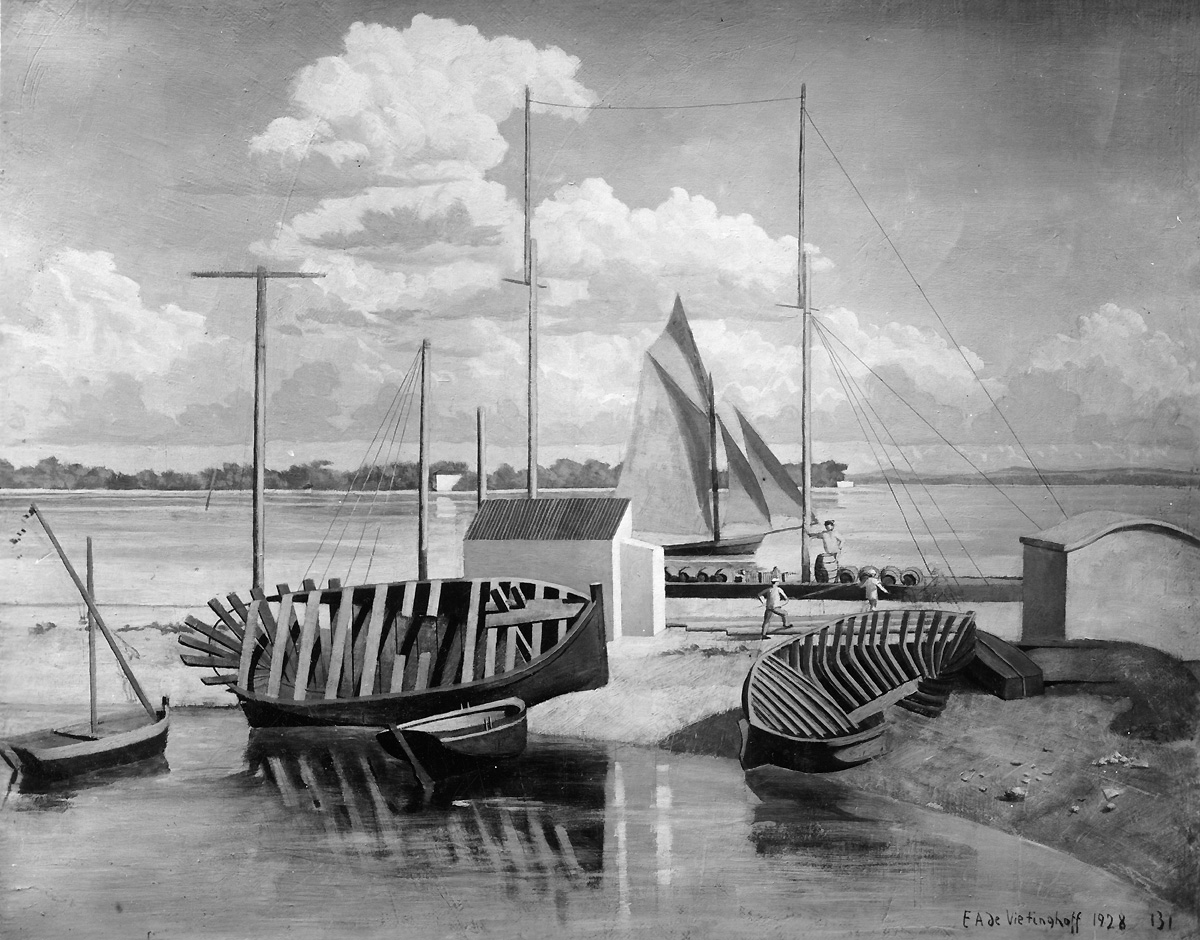
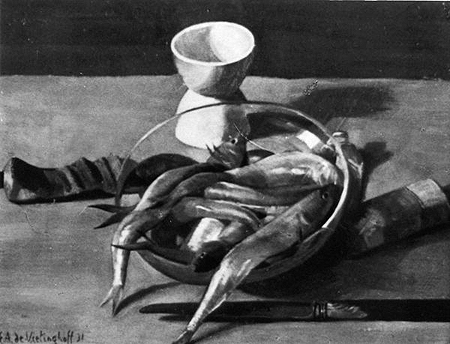 4) Small portrait of M. G. painted 1922 in Munich, exhibited at the gallery Max Vautier in Düsseldorf, not returned.
4) Small portrait of M. G. painted 1922 in Munich, exhibited at the gallery Max Vautier in Düsseldorf, not returned.4a) The queen of Saba, painted approx. 1918 in Zurich, exhibited at the Kunsthaus, lost in Paris during the war.
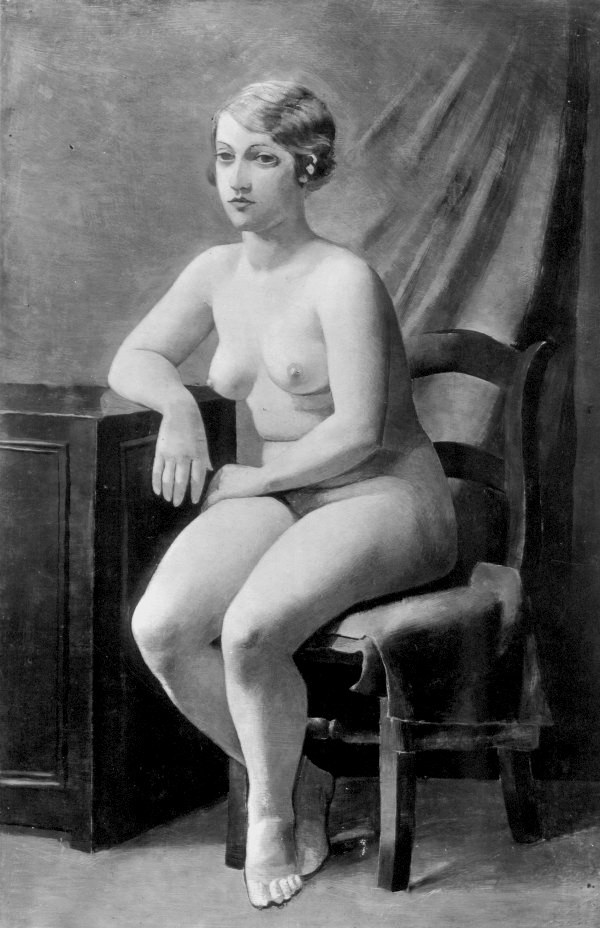
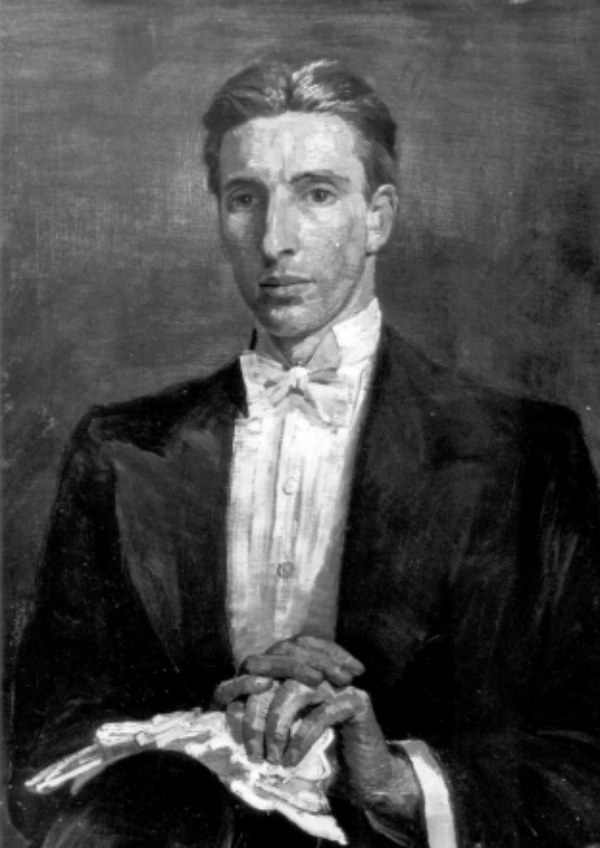 5) Still life with white pitcher, cubistic, gouache, painted 1923 in Paris, 1923 sold to M. H.
5) Still life with white pitcher, cubistic, gouache, painted 1923 in Paris, 1923 sold to M. H.5a) Portrait of Alexis (tempera with small strokes on resin glaze, board). Painted 1923 in Paris.
In that period, subjects such as Rowing boats, Bretagne and Chair and guitar were popular among French and Spanish painters in Paris; they appear in Vietinghoff’s early works as well.
Other subjects reflect the simple life of the young bohemian: plain dishes, meager furniture, a newspaper instead of a tablecloth, oil paint color tubes next to the food, full-bosomed young models and women stylishly dressed or with fashionable hairstyles.
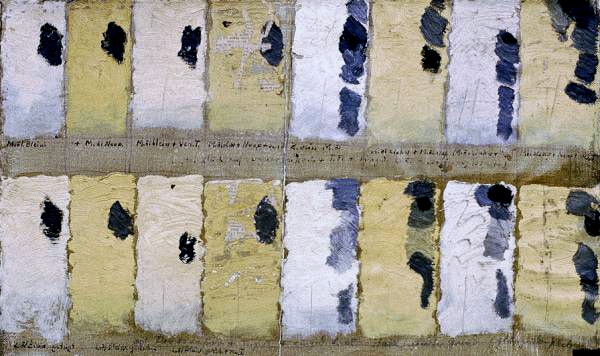
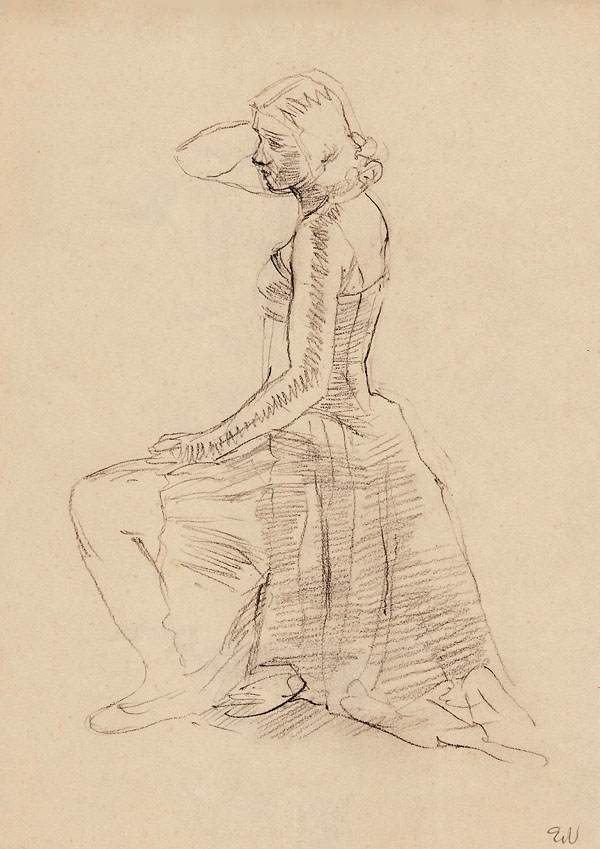 Why he produced so few pictures within six to seven years? This is plausible if one considers that he was intensively drawing, he repeatedly traveled (sometimes for extended periods), that he moved to Paris and there he first bought and refurnished his studio. This was just his beginning as an artist!
Why he produced so few pictures within six to seven years? This is plausible if one considers that he was intensively drawing, he repeatedly traveled (sometimes for extended periods), that he moved to Paris and there he first bought and refurnished his studio. This was just his beginning as an artist! 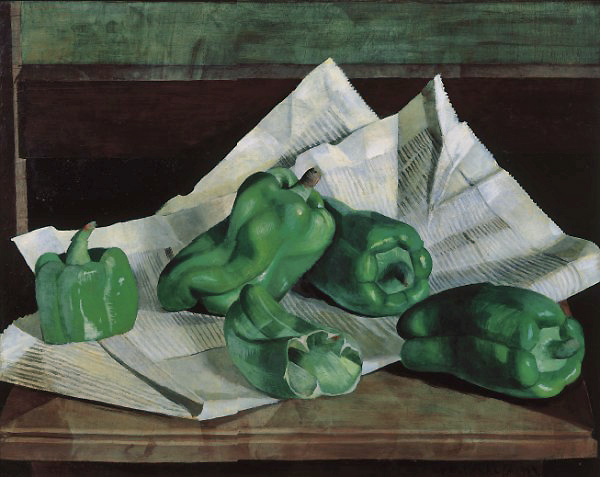 Stylistic aspects of Beginning I Phase
Stylistic aspects of Beginning I PhaseHis cubistic attempts in the very early years were too sporadic to discuss as a real cubistic phase. After 1924, Vietinghoff seems to have abandoned it. He called his excursions into Cubism "children's disease" from which he got over. Unfortunately, there do not remain even photographs of these paintings. He turned away from all painting trends of that period and consistently followed his own way.
The first works, which are only shown in black-and-white photos, display rather amateurish exploration. Either he did not regard them worth keeping or they were lost during the war.
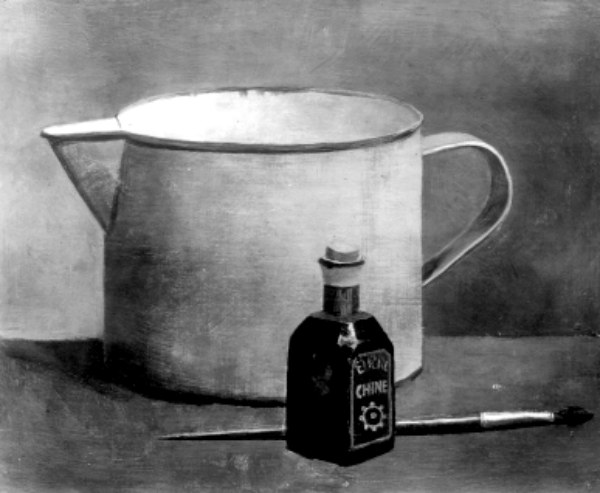
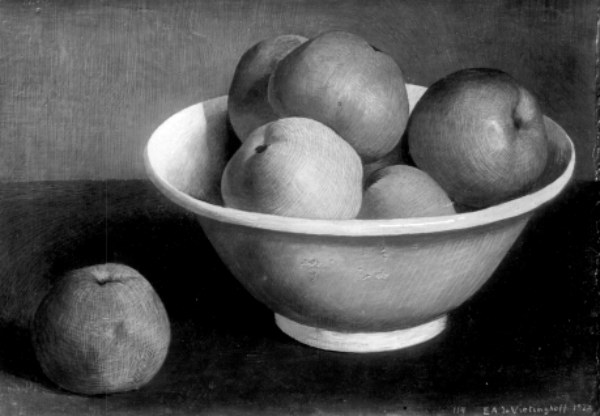 In these two pictures we recognize Vietinghoff’s obvious efforts to represent the correct form and contours of the pot as well as to achieve plasticity while accurately rendering the curves of the white bowl and the apples.
In these two pictures we recognize Vietinghoff’s obvious efforts to represent the correct form and contours of the pot as well as to achieve plasticity while accurately rendering the curves of the white bowl and the apples.These are inanimate objects that still are not embraced by the artist’s slumbering imagination. The representations are still somewhat awkward, the atmosphere is cool and neutral thus we cannot speak about his individual style.
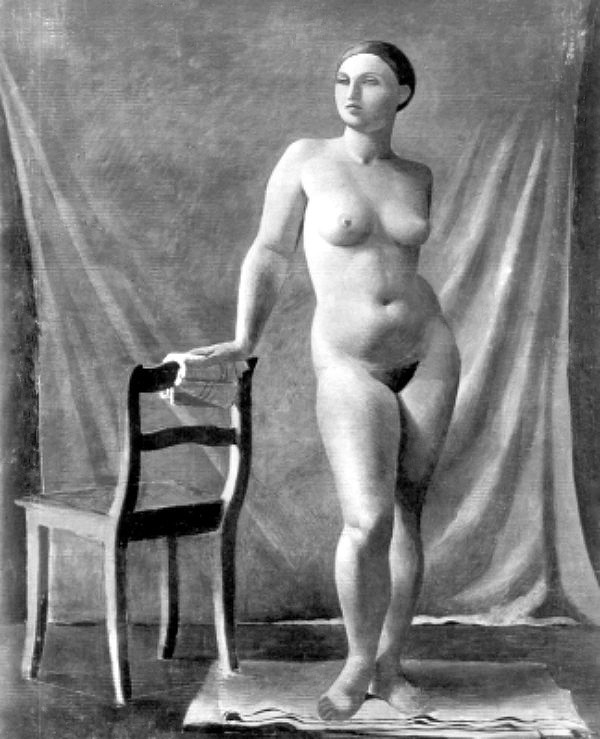
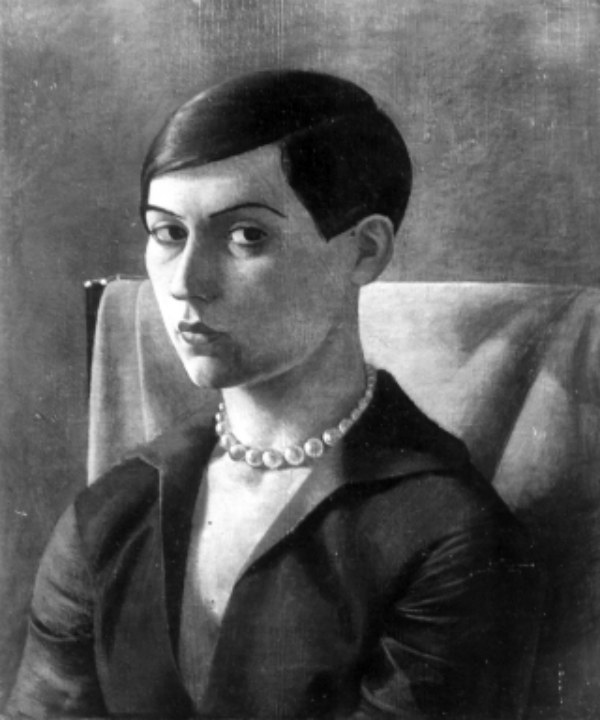 Broad eyelids are elements of the time’s style, also in his portraits, and the female body is painted in an pedestrian style. What is hardly visible on these photos is the natural effect of the skin for which he received early acclaim and what brought him several portrait commissions.
Broad eyelids are elements of the time’s style, also in his portraits, and the female body is painted in an pedestrian style. What is hardly visible on these photos is the natural effect of the skin for which he received early acclaim and what brought him several portrait commissions.We know only the following original paintings of this period: Portrait of Alexis from 1925, Green peppers on newspaper from 1928 and Red onions and white pot from 1931. The two still lifes are in the possession of the Egon von Vietinghoff Foundation. They are somehow impersonal and lack depth, nevertheless they are deliberate compositions that were sensitively painted.
The still lifes and postures of the nudes are obviously positioned. Although he had started to sell pictures, he was aware of the exercise characteristic of his works as we learn from an entry: Portrait of a Mr. Sch ., teacher. Painted in Paris approx. 1929, given [to the teacher] for his sitting.